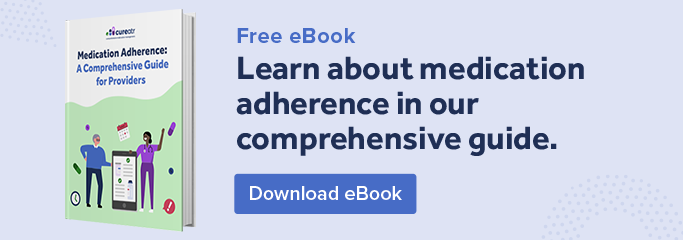Act of Continuing Treatment for Prescribed Duration
While often used interchangeably, medication adherence and medication compliance can be defined differently. Such a distinction is important when organizations set out to improve patient adherence and/or compliance with a medication regimen. By differentiating between the two concepts, organizations can more effectively analyze their performance in each area, identify targeted changes to implement, and then measure the effectiveness of those changes. Here are four ways medication adherence vs compliance differ. The National Stroke Association (NSA), notes that it's important to recognize the difference between medication adherence and compliance and defines the terms as follows: While there is some overlap between the risks associated with medication nonadherence and non-compliance, there are differences in specifics. Concerning medication adherence, studies have shown that 20-30% of prescriptions are never filled, according to an Annals of Internal Medicine review. A survey sponsored by the National Community Pharmacists Association (NCPA) conducted among American adults 40 and older who have been prescribed ongoing medication for a chronic condition found that about 28% of patients failed to refill a prescription in time. NSA notes that poor medication adherence can lead to issues including: Concerning medication compliance, the NCPA survey showed that 57% of patients missed a dose, 22% took a lower dose, and 14% stopped taking their medication. A Mayo Clinic Proceedings article notes that approximately 50% of patients with chronic illness do not take medications as prescribed. The NSA notes that medication non-compliance can lead to hospital stays, with the average length of stay due to medication noncompliance is about four days. The Mayo Clinic Proceedings article notes that patients who fail to take medications as prescribed faced increased risk of morbidity and death and lead to costs for the overall health care system of $100 billion or more per year. One of the significant reasons why? A proportion of days covered (PDC) rate of 80% or more is frequently cited as the threshold needed for optimal therapeutic efficacy. Why do patients struggle with medication adherence? Reasons can include: Reasons patients struggle with medication compliance include: Here are some quick tips to help your patients improve their medication adherence and compliance. To help improve adherence: To help improve compliance: 

1. Definitions
2. Risks

3. Causes
4. Improvements

Source: https://blog.cureatr.com/medication-adherence-vs-compliance-4-ways-they-differ
0 Response to "Act of Continuing Treatment for Prescribed Duration"
Post a Comment